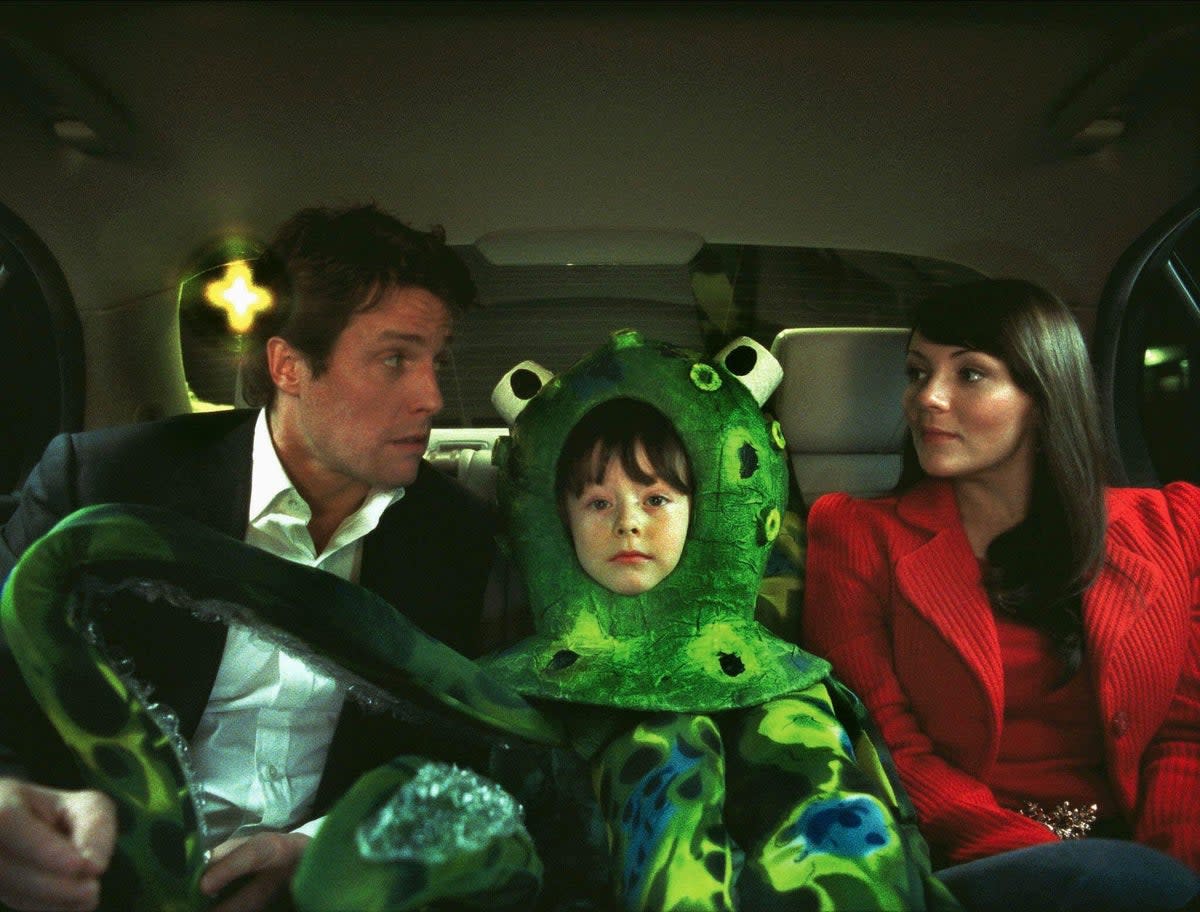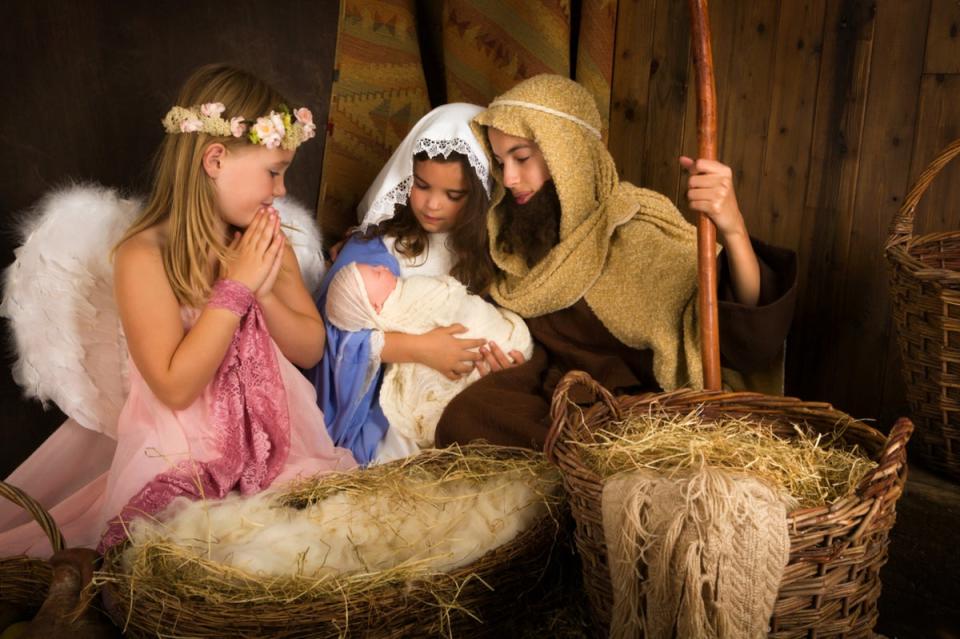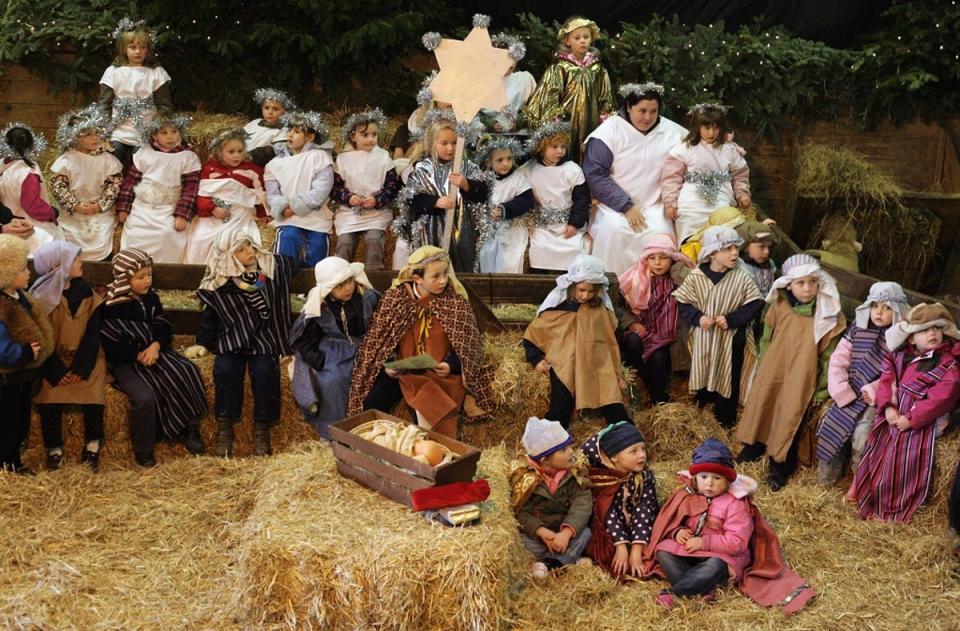‘It’s carnage’: Why nativity play season is the most stressful time of the year for teachers

Picture this. You’ve spent the past few weeks, maybe months, moonlighting as a part-time theatre impresario: shaping the script, rehearsing musical numbers, and making sure your stars are hitting their marks. Then, on the December morning of the big premiere, as angels, shepherds and donkeys are donning their costumes, the phone rings. Half of the cast are sick, their parents say. The whole of reception has been struck by a nasty winter bug. Andrew Lloyd Webber never had to deal with this, you think to yourself. “One time it was just phone call after phone call: the whole cast was dropping like flies,” recalls former reception teacher and nativity veteran Alex Burnside, the founder of a pre-school phonics class providers Phonics with Robot Reg. “We had no Mary. I was going on the playground trying to find a child to replace her.”
Welcome to the chaotic world of the primary school nativity play, where the adage “the show must go on” has never been truer. It’s a rite of passage for kids, and a logistical nightmare for teachers. One half-hour performance – whether it be a traditional tableau or something a little left-field (more on that later) – requires at least a half-term’s worth of planning. “I don’t think the parents ever realise the work that goes into it,” says Lily Bond, who spent several years teaching at a south London primary school. “They say, ‘Never work with animals or children.’ It’s just like herding kittens, basically, and getting them to learn anything by heart takes weeks and weeks of input.”
Throughout December, she adds, carol singing basically becomes a core subject: “You’re not doing anything except English, Maths and nativity.” It’s no wonder that when you ask primary staff to describe the run-up, the vibe is… well, a bit frazzled. “It’s carnage,” Bond says. “Put it this way. A couple of my friends when I was teaching had given up smoking, and then started again during the Christmas term because of the stress.” Teacher and travel nanny Julia Seal, meanwhile, still recalls “the absolute fear and stress” she faced when tasked with single-handedly corralling three year groups into putting on a nativity play while two of her colleagues were on sick leave. “It was just something I will never forget,” she says. “It was like my magnum opus!”
The first big decision? The script. Instead of opting for a straightforward nativity, Burnside and her colleagues tended to buy in a pre-written Christmas-themed production (there are plenty of companies selling kid-friendly shows online). They’d listen to song snippets before taking their pick. “We might edit it a bit, because the children were so little,” she says. The plays are geared towards specific age groups, but there’s a significant gap between the performing capabilities of a four-year-old who has only spent a few weeks in school and those of a self-confident seven-year-old. Those bought-in performances, she adds, tend to involve “weird and wonderful whacky characters” alongside the classic nativity heavy hitters (Mary, Joseph, wise men et al). “I bet the poor parents love when their child is the cockerel: ‘Brilliant – I could just go to Tesco and buy a king outfit, but I can’t buy a cockerel…’”
Sometimes staff will embrace the opportunity to get creative. “Every year, there’s a newly qualified teacher who comes in with some new-fangled idea,” Bond says. “It gets really abstract and meta when you’re trying to include all the children and obviously come up with exciting ideas. There was one where aliens had invaded Bethlehem. And so, it was Mary, Joseph, then all the other kids as aliens [arriving] from other planets for the birth of Jesus.” Recently, one of her more adventurous colleagues masterminded a play inspired by Britain’s Got Talent. “They had a panel of judges who would judge all the characters from the nativity based on different Christmas performances. My kids were camels, so we had to teach them how to do a tango, dressed in camel costumes.” Suddenly, that scene in Love Actually in which Emma Thompson’s on-screen daughter proudly announces she has been cast as her nativity’s “first lobster” doesn’t seem so far-fetched.
The nativity has such a hold on our imagination that it’s often seen as a sort of rudimentary psychometric test for kids – their appointed roles apparently reflective of some inner self. Mary, we assume, is popular and probably photogenic; the narrator is chatty and articulate; the wise men, solemn, and so on. In 2019, Virgin Media released a survey revealing that children who played the ox went on to earn the highest salaries, closely followed by former Angel Gabriels. The study, however, was conducted with a paltry sample size of just 2,000 – and as a one-time ox, I beg to differ. (Although, in truth, I played – mortification of mortifications – the back end of an ox, so perhaps the research doesn’t quite apply.) But personality is a consideration during casting – as is reading ability. “You always get [a pupil who is] quite advanced, usually a girl, who’s quite confident to speak who you end up choosing to be the narrator,” Bond says. “That’s always quite obvious – even in the first week of term, you’re like, ‘I already can sense who my narrators are going to be in this room’.”

It’s a running joke, she adds, “that you always pick the naughty kids to be the angels”. Burnside, meanwhile, tended to cast the less theatrically inclined children as camels. And although Mary and Joseph get star billing, the roles are often given to “someone shy and quiet, because generally they just have to sit there”, she explains. “Mary and Joseph don’t even have that many lines,” Seal agrees. “They’re certainly recognisable parts, but children can be the narrator, the sheep, a shepherd and completely own the part and actually be really funny. Sometimes you get, ‘But I wanted to be that one!’ but once they get over that, they really can do so well.”
It’s not just the kids’ temperaments that need to be delicately handled. Parent politics come into play, too. “There’s so much hanging on the nativity… for a lot of parents it’s a big milestone,” Seal says. It can be “quite hard to manage because parents have very different expectations and ideas, compared to what is quite often your more realistic expectation of what a child can do. And sometimes children are different at home versus at school, so there’s a lot in play there”. Even if parents are happy with the role their little one has been given, sometimes “they’re not happy with the amount of lines [their child has] compared to someone else. So, it has to be very carefully choreographed”.
It’s a running joke that you always pick the naughty kids to be the angels
When it comes to the night (or morning) of the performance itself, there are a few things that teachers don’t want to hear from well-meaning audience members. “Parents are always saying, ‘They’ll be really cute,’ which as a teacher, I found annoying,” Burnside says. “Or ‘We actually prefer it when they do something wrong!’ We’ve practised this for weeks – although we know [mistakes] get a laugh, it isn’t what the teacher wants. We want the West End-style show!” Sometimes, family members will bemoan the story itself. “Grandparents would always say, ‘Oh, it’s changed so much from when I last saw this sort of thing,’” says Bond. “It’s because we try to make them a little bit more inclusive.” And, inevitably, snap-happy parents will get a telling-off for using their phones, despite the repeated pre-show instructions not to. “One year, my boss actually stopped it halfway through and was like, ‘This is ridiculous. There’s five, ten cameras with flashes on… Please could you put your phones away?’” Bond remembers. “Five minutes later they got them back out again.”

When the audience are finally allowed to take photos, it feels “like the paparazzi have arrived”, says Burnside. The nativity, she notes, is “really for the parents, I don’t think the children really enjoy it by the end”. Bond echoes her sentiments almost exactly, “It’s a weird performative thing, where the kids, by the end, don’t enjoy it. It’s all basically to show the parents, to give them a chance to say, ‘Oh, aren’t they cute? It’s Christmas!’”
Despite the stresses, the casting politics and the last-minute role re-shuffles, Bond and Burnside agree the tradition has its charms. “Christmas is a really manic time, but it’s a really lovely time to be around little excited kids,” Burnside says. “Life is really hard, and you need that bit of festivity,” Bond adds. “One of the things I miss most about being a teacher is that magic you have when you’re around kids at Christmas. And I think [the nativity] engages parents in that. It gives them something where they come together and watch something celebratory and festive. In the middle of winter, you need that. It’s something to boost morale.”

